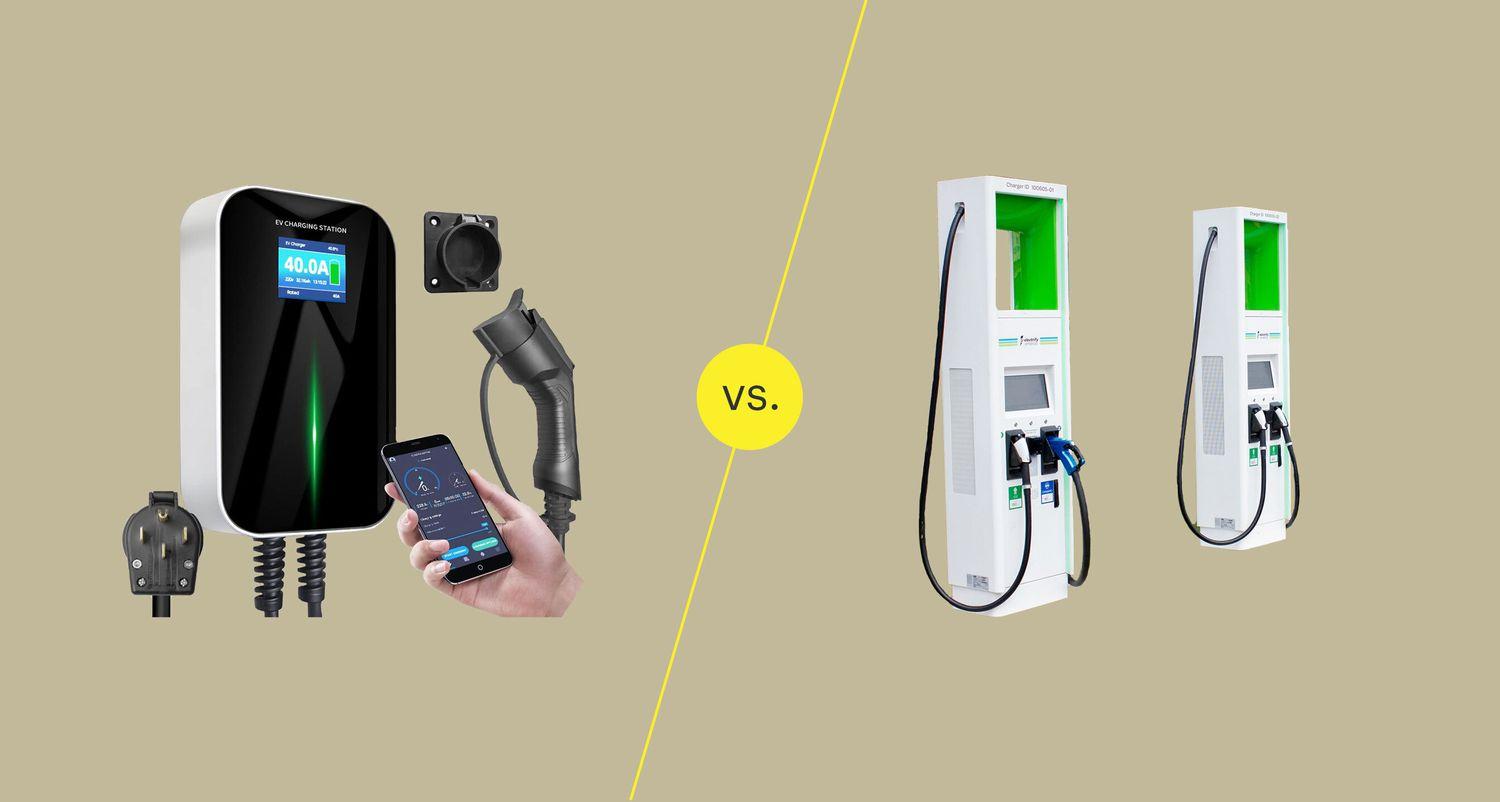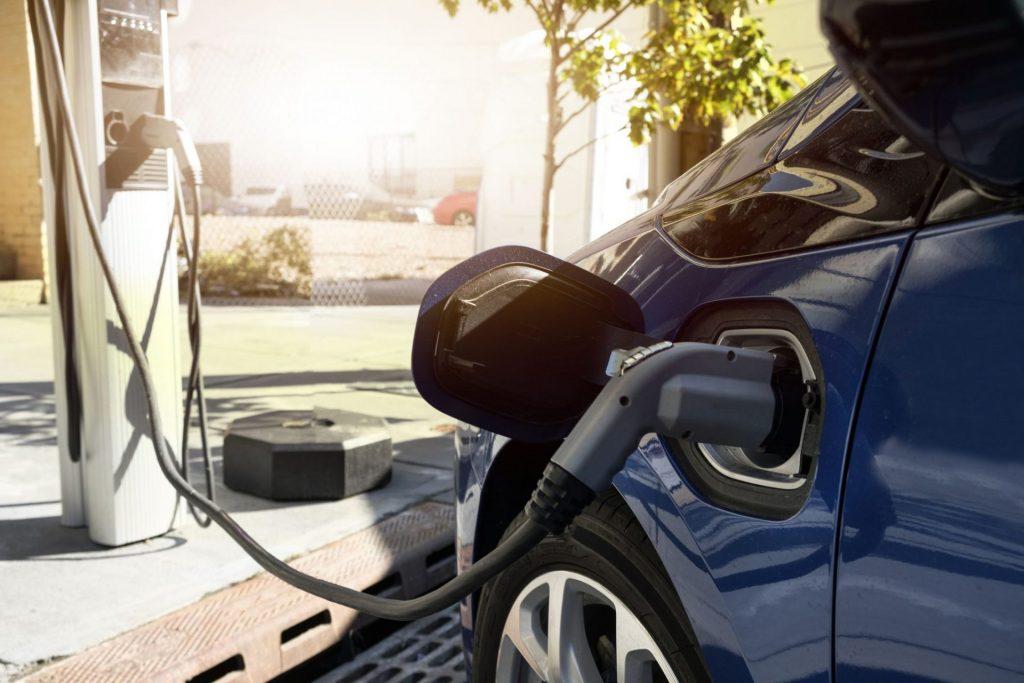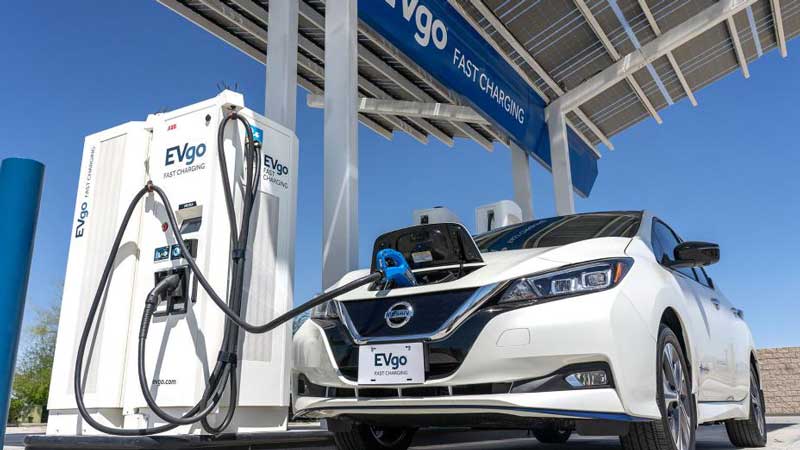Cost Analysis: Public Charging vs Home Charging
By Sebastian Orellana
Updated Feb 17, 2024

This article will delve into the world of electric vehicle (EV) charging, from its basics to the variety of charging stations available. We'll equip you with the know-how of charging procedures, factoring in your vehicle's power consumption and the cost of electricity. We'll dissect the costs associated with public and home EV charging, highlight influencing factors and compare their advantages & disadvantages.
Table of Contents
Lastly, we look at future technological developments, renewable energy integration, and government policy, which may impact charging costs. Whether you're an EV owner or looking to become one, this guide has all you need to know about the valuable aspect of charging.
READ: Is Fox Shocks Better Than Bilstein?
Understanding the Basics of Charging Electric Vehicles

Charging an electric vehicle (EV) is more straightforward and potentially more cost-effective than fueling a conventional petrol or diesel car. Regardless of the type of electric vehicle you own or are considering purchasing, be it a plug-in hybrid or an all-electric car, understanding how, when, and where to charge is crucial. This section will demystify some aspects related to charging electric vehicles, starting from its definition, the types of available charging stations, and finally, the actual process of charging the vehicle.
Definition of Electric Vehicle (EV) Charging
Electric Vehicle Charging refers to replenishing an electric vehicle's battery with energy, enabling it to power its electric motor and other components essential to function. Just like charging your phone or any other device, it requires a source of electricity and a charger. However, unlike house appliances, EVs don't draw power from a standard electric outlet (they can, but it's inefficient).
They instead use specially designed plugs compatible with unique outlets or charging stations. The charging function fundamentally changes electrical energy into chemical energy stored inside the batteries, ready for use by the electric drive systems.
Types of EV Charging Stations
There are three types of EV charging stations, Level 1, Level 2, and DC Fast Charging (DCFC), each differing in voltage and power delivery.
Level 1 charging stations use a standard 120-volt connection, the same as everyday household outlets. They are the slowest means of charging, typically providing 2-5 miles of range per hour of charging, and are generally used for overnight charging at home.
Level 2 charging stations operate at 240 volts, used by large home appliances such as air conditioners and electric ranges. They can deliver 10-60 miles of range per hour of charging, making them suitable for home and public charging. They are commonly found in commercial and public areas like shopping centers, parking lots, and dedicated charging stations.
Lastly, DC Fast Charging, as the name suggests, is the quickest way to charge an EV, often providing a full charge in 30-60 minutes. However, the speed comes with a caveat as it requires special equipment and is more expensive to install, thus not usually found at residential properties.
Procedures for Charging an EV
Charging an electric vehicle is a straightforward process, akin to refueling a traditional car. Just plug the charging cable into the vehicle's charging port, typically near the car's front or rear end, and connect the other end to the charging station. Modern EVs usually have an indicator light that shows the charging progress and notifies you when the battery is full.
Likewise, with advanced technology, there are smart chargers available that allow remote control via a mobile app. Users can schedule charges to take advantage of off-peak electricity tariffs, track charging progress, and receive notifications when charging is complete.
While charging at home is convenient, charging on the go may require planning. Public charging can be a pay-per-use or subscription-based service, so always have an access card or payment method handy. You can easily find charging spots using various smartphone apps that show real-time availability and costs.
Key Factors Influencing Cost of Charging EV

Electric vehicles (EVs) have become a popular alternative to traditional gasoline-driven cars due to their lower operating costs, environmental friendliness, and technological advancements. However, the EV charging cost can vary significantly based on several key factors. Understanding these factors can help EV owners manage their costs more effectively and make informed decisions about how to charge their vehicles.
Cost of Electricity
One of the most obvious factors that influence the cost of charging an EV is the cost of electricity. The price of electricity varies dramatically depending on geographic location, utility provider, and type of user (residential, commercial, industrial). As a result, the cost of charging an EV at home could differ vastly from that of charging at a public charging station.
It's also important to note that electricity prices can fructify during different times of the day, with prices usually higher during peak demand hours. This price fluctuation can disproportionately influence the cost of charging EVs, especially if they're charged during peak periods. On the bright side, most electric utility companies offer special rates for EV owners, which can help mitigate these costs.
Time of Charging
The time it takes to recharge an electric vehicle largely depends on the vehicle’s battery size and the power rating of the charging point. Rapid chargers are the quickest way to get a full charge but are also the most expensive. Charging at home with a regular domestic socket or a specially installed home charging point is slower but much more economical.
Also, as mentioned earlier, electricity costs vary at different times of the day. Charging your EV overnight when electricity rates are typically lower can reduce the charging cost significantly. In many areas, utilities offer special EV charging rates, including time-of-use tariffs incentivizing owners to charge off-peak times.
READ: What are A-Arms?
Type of EV Charging Station
Not all EV charging stations are created equal. There are three main types of EV charging – slow charging (up to 3kW), fast charging (7-22kW), and rapid charging (43-50kW). Each offers a different charge speed and has an extra cost.
Slow charging options are often less expensive, but they can take a long time to charge the vehicle fully. Fast chargers offer a quicker charging time at a slightly higher cost, while rapid chargers provide the fastest charging speeds but at a significantly higher cost.
Power Consumption of the Vehicle
The power consumption of an electric vehicle impacts how often and how long the vehicle needs to be charged. EVs with higher energy efficiency can travel longer distances with less energy, thus costing less to charge.
On the other hand, larger and heavier electric vehicles that consume more power will cost more to charge. Additional factors that affect power consumption include weather conditions, driving style, and use of in-car systems such as air conditioning and heating. Therefore, understanding your vehicle’s energy economy is crucial to estimating the cost of charging an EV.
Cost Analysis of Public EV Charging
As the age of electric vehicles (EVs) continues to dawn, one of the critical concerns for many people has been the cost of using public charging stations. This section delves into this subject that often brings about confusion and misinformation. We will offer a comprehensive assessment of the cost implications and factors that may impact these costs.
Cost of Using Public Charging Stations
Public charging stations, also called Electric Vehicle Supply Equipment (EVSE), offer a solution for EV drivers on official duty, running errands, or traveling far from home. The charging cost at these stations varies considerably, with the variations pegged mainly on the charging speed and the company or entity providing the charging service.
Regarding pricing models, some stations charge a fee per hour, others charge a fee per kilowatt-hour (kWh), while others levy a flat rate irrespective of the power your car consumes. The kWh price can range between $0.15 to $0.60, depending on the provider and location. Some providers also offer memberships, and members of such programs can enjoy lower rates than non-members.
While these costs can appear to be higher than residential charging, they align pretty well with the convenience and speed that they offer, especially for drivers who need fast charging. The bottom line is that while public charging can be more expensive than home charging, they offer invaluable services that can sometimes be essential.
Factors Impacting Public Charging Costs
Various factors can impact the cost of using public charging stations, which can explain the broad spectrum of pricing models and charges.
Charging Speed:
Charging stations offer different charging speeds, with fast-charging stations being more expensive than regular ones. The fast-charging stations can power up an EV much faster, but this comes at an elevated cost.
Cost Structure of Station Providers:
As mentioned earlier, different station providers have unique pricing models. Some charge based on the duration your vehicle is plugged into the station, others charge you based on the amount of power you draw, and others have a flat rate.
Location of the Charging Station:
The location of a charging station also significantly dictates how much they will charge you. Stations located in cities or at prime locations tend to be more expensive than those off the grid or in remote areas.
Advantages and Disadvantages of Public Charging
Public charging stations have their pros and cons. On the plus side, they offer high-speed charging which can be vital for drivers in a rush or those driving long distances. They also provide a viable solution for people who cannot charge at home because of parking or equipment constraints.
On the downside, charging at a public station is usually more expensive than home charging. Some stations also get extremely busy, resulting in longer wait times, especially in locations where EVs are popular.
In the final analysis, public charging stations are critical in promoting the EV revolution by offering drivers a quick and convenient way to recharge their cars. However, it is also clear that users need to properly understand their cost implications to manage their expenses and expectations better.
Cost Analysis of Home EV Charging

The electrification of transport has gathered pace in recent years with sales of electric vehicles (EVs) soaring. Due to their zero emissions and significant fuel savings, EVs' popularity is expected to continue to rise. For EV owners, one of the essential facets to consider is the availability of charging facilities, especially at home. This section provides an in-depth cost analysis of Home EV charging considering various factors.
Cost of Installing a Home Charging Station
Installing a home charging station for EVs can vary greatly in cost depending on various factors. Prices for charging equipment typically range from $300 to $1,500. However, this cost can increase significantly upon including labor costs, wiring, potential upgrades to the home's electrical system, and potential permitting fees.
Generally, the installation process involves a professional electrician and, in some circumstances, will require updates to the home's electrical capacity. On top of the hardware and installation, there are potential recurring costs, such as maintenance and repair of the station equipment. Despite the potentially high upfront costs, a home charging station can still be considered a smart investment for its long-term savings in refueling costs.
Running Cost of Home EV Charging
The operating cost of home EV charging primarily depends on the cost of electricity and the car's fuel efficiency. Calculating the cost of charging can be boiled down to multiplying the car's battery capacity (in kWh) by the cost of electricity (in dollars per kWh). It is worth noting that EVs can vary greatly in fuel efficiency, with some models achieving upwards of 4 miles per kWh. Thus, the cost of running a home EV charging station will largely depend on the electric vehicle's characteristics and electricity cost.
Factors Impacting Home Charging Costs
The cost of home EV charging is influenced by several factors. A major factor is the cost of electricity, which can vary from region to region and even within regions. For instance, the cost of electricity is usually lower at night during off-peak hours compared to during the day.
Another cost driver is the type of home charging station, as higher power units can charge EVs more quickly but at a higher cost. Other factors that may influence the cost of home EV charging include the vehicle's battery capacity, the frequency of charging, and the vehicle's energy efficiency.
Advantages and Disadvantages of Home Charging
There are several advantages of home charging. One obvious benefit is convenience; charging an EV at home means no longer having to make detours to gas stations. Additionally, charging at home during off-peak hours can help EV owners save on electricity costs. However, there are also a few disadvantages to consider. Installing a home charging station can be expensive, and in some cases, home charging might not be possible due to inadequate electrical capacity.
Furthermore, charging at home may take longer than at public charging stations due to typically lower power levels. Despite these disadvantages, many EV owners find that the advantages of home charging make it a worthwhile investment.
Comparative Study of Public Charging vs Home Charging
Electric vehicles are on the path to becoming mainstream, driven by their incredible environmental benefits. However, a common concern for many potential electric vehicle (EV) owners is the availability and accessibility of charging stations. This concern can be mitigated greatly, considering that most EVs can be conveniently set at home.
However, the rise of public charging stations has also provided an alternative mode of recharging EVs. This analysis compares and contrasts public charging stations and home charging solutions from multiple dimensions: cost, efficiency, convenience, and impact on the electrical grid.
Comparative Cost Analysis
On the surface, charging an electric vehicle seems simple. However, the economics of charging can be more complex. You typically pay your local utility’s residential electricity rate when you charge your EV at home. This rate can vary significantly depending on where you live and what time you charge your vehicle.
Public charging stations, however, usually have a set rate. Some operate on a subscription model, with a flat monthly fee for unlimited charging. Others charge per session or per kilowatt-hour of electricity used. Public charging can sometimes be more expensive than home charging, especially if you are a frequent commuter. However, if you only occasionally need to charge on the go, public charging stations might be a cost-effective solution.
Efficiency Comparison
When discussing efficiency, we primarily consider the time it takes to charge an EV. Home charging often employs slower Level 1 or Level 2 charging, which could take several hours to charge your car depending on its battery size fully. However, this is usually not an inconvenience because it happens overnight while you sleep.
Public charging stations often offer fast-charging or supercharging capabilities, which can recharge a significant proportion of your battery in just half an hour. This seems very efficient but keep in mind that the efficiency of charging slows down as your battery fills up, meaning that the last 20% or so will take significantly longer to charge - whether you’re at a public charging station or at home.
Convenience Comparison
In terms of convenience, both home and public charging stations have unique advantages and disadvantages. Home charging is convenient because it's always available when you need it.
Nevertheless, public charging stations are helpful if you’re taking an exceptionally long trip, don’t have the option to charge at home, or need an emergency charge. However, accessing a public charging station might not always be convenient, depending on where you live, especially if there aren’t many in your area or if they're always in high demand.
Impact on Grid Comparison
The impact on the electricity grid is another essential factor when comparing home charging to public charging. If many EV owners charge their vehicles during peak electricity usage, it can strain the grid. Some utilities offer special rates to incentivize off-peak charging at home, which can mitigate this issue.
On the other hand, public charging stations, particularly fast-charging facilities, draw large amounts of power. However, many are strategically located close to existing high-capacity parts of the grid, minimizing their overall impact. Moreover, some public charging locations are incorporating renewable energy sources, like solar panels, which can ease the strain on the grid.
Future Developments Impacting Charging Costs

Predicting the future is always challenging, but it's especially tricky regarding the evolving world of electric vehicles (EVs). However, several trends suggest that future developments may significantly change EV charging costs. These advancements can come from technological developments, renewable energy integration, and government policy and regulation changes.
Technological Developments
Technological developments are among the most significant contributors to future changes in EV charging costs. Advancements in battery technology, charging infrastructure, smart grids, wireless charging technology, and more are all factors that could significantly impact the cost of charging electric vehicles.
In terms of battery technology, enhanced energy density and longevity could lead to batteries that can store more power and last longer—thus reducing the need for frequent charging. Additionally, battery management systems (BMS) advancements could improve charging efficiency and extend battery life, thereby reducing charging costs.
Emerging technologies such as Vehicle to Grid (V2G) systems also hold the potential to influence charging costs. This technology enables the bidirectional flow of energy, allowing electric vehicles to return power stored in their batteries to the grid when needed and recharge off-peak hours when electricity is cheaper. Thus, it could provide opportunities for EV owners to earn revenues from their vehicles, consequently lowering their overall charging costs.
On the charging infrastructure side, any advancements leading to the widespread deployment of fast-charging stations could result in lower charging costs due to economies of scale. Improved wireless charging technology could also offer a more convenient and cheaper charging solution in the future.
Renewable Energy Integration
The utilization of renewable energy sources is another major factor that could considerably impact EV charging costs. As more renewable energy sources such as solar and wind are integrated into the grid, and with the deployment of energy storage systems, the cost of electricity could decrease.
Moreover, adopting solar power in homes and businesses and solar-powered charging stations can directly impact the cost of EVs. By generating and storing their electricity, EV owners can shield themselves from electricity price fluctuations, lowering their charging costs.
Renewable energy integration presents economic benefits and strengthens the environmental case for electric vehicles. As the grid becomes cleaner, so does charging an electric vehicle, making EVs an even more sustainable transportation option.
READ: Best Suspension Kits: A Comprehensive Guide
Government Policies and Regulations
Political and regulatory environments also play a crucial role in the cost of charging electric vehicles. Government subsidies, incentives, and regulations can significantly affect charging costs by incentivizing the adoption of electric vehicles and the installation of charging stations.
Governments offer time-of-use (TOU) rates in many areas, encouraging EV owners to charge their cars during off-peak hours when electricity prices are lower. Such rates could lead to significant savings in EV charging costs.
Moreover, governments are exploring regulatory measures favoring renewable energy and technologies that increase the grid's capacity, potentially impacting the charging costs. For example, implementing carbon pricing could make fossil fuel-generated electricity more expensive and renewable energy more competitive.
Overall, these future developments could lead to more cost-efficient and sustainable charging solutions for electric vehicles. While uncertainties could affect these trends, the direction is nonetheless clear: the future of EV charging likely entails lower costs and greener energy.
